-
Nuclear fusion could power a rocket to take humans to Mars
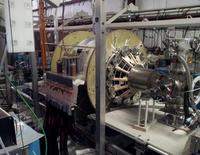
NASA estimates a round-trip human expedition to Mars would take more than four years using current technology. The sheer amount of chemical rocket fuel needed in space would be extremely expensive — the launch costs alone would be more than $12 billion. Now, astronauts could be a step closer to our nearest planetary neighbor through a manipulation of nuclear fusion, the same energy that powers the sun and stars.
-
-
Fully secure communication
Can worldwide communication ever be fully secure? Quantum physicists believe they can provide secret keys using quantum cryptography via satellite. These physicists have, for the first time, successfully transmitted a secure quantum code through the atmosphere from an aircraft to a ground station.
-
-
Exploring the human brain to support national security
The other day, at a White House event, President Barack Obama unveiled a new research initiative designed to revolutionize the understanding of the human brain. DARPA plans $50 million in 2014 investments to translate this increased understanding of brain function to create new capabilities.
-
-
Large robotic jellyfish to patrol the oceans
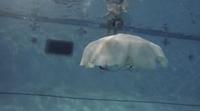
The Office of Naval Research wants to place self-powering, autonomous machines in waters for the purposes of surveillance and monitoring the environment, in addition to other uses such as studying aquatic life, mapping ocean floors, and monitoring ocean currents. Researchers have built a device for that purpose — a life-like, autonomous robotic jellyfish the size and weight of a grown man, 5 foot 7 inches in length and weighing 170 pounds.
-
-
GAO lauds U.S. Navy's science and technology R&D
The Office of Naval Research (ONR) is the Department of the Navy’s science and technology (S&T) provider, charged with discovering, developing, and transitioning innovative S&T to meet soldier needs. Since its inception in 1946, ONR research efforts have supported the development of the laser, GPS, transistors, fiber optics, radar, cell phones, and more. A recent Government Accountability Office (GAO) report cites ONR’s Future Naval Capabilities (FNC) as an example of efficient, cost-effective program for making science and technology research functional.
-
-
Tactile helmet helps first responders in challenging conditions
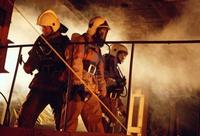
A specially-adapted “tactile helmet,” developed by researchers at the University of Sheffield, could provide fire-fighters operating in challenging conditions with vital clues about their surroundings. The helmet is fitted with a number of ultrasound sensors which are used to detect the distances between the helmet and nearby walls or other obstacles.
-
-
A more powerful terahertz imaging system developed
Low-energy terahertz radiation could potentially enable doctors to see deep into tissues without the damaging effects of X-rays, or allow security guards to identify chemicals in a package without opening it. An electrical engineering research team has developed a laser-powered terahertz source and detector system which transmits with fifty times more power and receives with thirty times more sensitivity than existing technologies. This offers 1,500 times more powerful systems for imaging and sensing applications.
-
-
Fluctuating wind power as a solution rather than a problem
Incorporating wind power into existing power grids is challenging because fluctuating wind speed and direction means turbines generate power inconsistently. Coupled with customers’ varying power demand, many wind-farm managers end up wasting power-generation capacity and limiting the service life of turbines through active control in order to avoid any possible damage to the power grid from spikes in supply.
-
-
Day of the nuclear battery nears
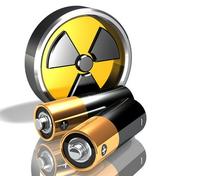
Experts in nuclear physics have helped develop research toward a “nuclear battery,” which could revolutionize the concept of portable power by packing in up to a million times more energy compared to a conventional battery.
-
-
Helping coal miners escape underground disasters
Recent advances in mining research and practices have improved the safety and health of underground coal miners and extensive rescue strategies are in place, but more coordinated planning and training are needed better to prepare miners to escape in the event of a mine emergency, says a new report from the National Research Council.
-
-
Building stronger, greener concrete with biofuel byproducts
The world uses nearly seven billion cubic meters of concrete a year, making concrete the most-used industrial material after water. Even though making concrete is less energy intensive than making steel or other building materials, we use so much of it that concrete production accounts for between 3 to 8 percent of global carbon dioxide emissions.
-
-
New structure for regulation of geoengineering research needed: experts
Geoengineering, the use of human technologies to alter the Earth’s climate system — such as injecting reflective particles into the upper atmosphere to scatter incoming sunlight back to space — has emerged as a potentially promising way to mitigate the impacts of climate change. Such efforts, however, could present unforeseen new risks. This inherent tension has thwarted both scientific advances and the development of an international framework for regulating and guiding geoengineering research.
-
-
The infrastructure of asteroid-mining economy
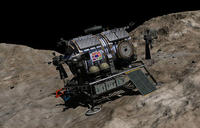
An asteroid-mining space economy would be easier to build if there were the equivalent of a few Stuckey’s around out there. As is the case with other enterprises, a space economy will need fuel, liquids, and supplies, and these could be stored in outposts on dwarf planets like Ceres.
-
-
How to predict the progress of technology
MIT researcher finds Moore’s Law and Wright’s Law best predict how technology improves.
-
-
Stopping vehicle in their tracks -- remotely
The need to stop vehicles remotely was identified by the law enforcement community. In 2010, the characteristics of a squid’s sticky tendrils were combined with the concept of Spiderman’s super-strong webbing to create a prototype of the first remote device to stop vehicles in their tracks: the Safe, Quick, Undercarriage Immobilization Device (SQUID).
-
More headlines
The long view
New Technology is Keeping the Skies Safe
DHS S&T Baggage, Cargo, and People Screening (BCP) Program develops state-of-the-art screening solutions to help secure airspace, communities, and borders
Factories First: Winning the Drone War Before It Starts
Wars are won by factories before they are won on the battlefield,Martin C. Feldmann writes, noting that the United States lacks the manufacturing depth for the coming drone age. Rectifying this situation “will take far more than procurement tweaks,” Feldmann writes. “It demands a national-level, wartime-scale industrial mobilization.”
How Artificial General Intelligence Could Affect the Rise and Fall of Nations
Visions for potential AGI futures: A new report from RAND aims to stimulate thinking among policymakers about possible impacts of the development of artificial general intelligence (AGI) on geopolitics and the world order.
Keeping the Lights on with Nuclear Waste: Radiochemistry Transforms Nuclear Waste into Strategic Materials
How UNLV radiochemistry is pioneering the future of energy in the Southwest by salvaging strategic materials from nuclear dumps –and making it safe.
Model Predicts Long-Term Effects of Nuclear Waste on Underground Disposal Systems
The simulations matched results from an underground lab experiment in Switzerland, suggesting modeling could be used to validate the safety of nuclear disposal sites.
